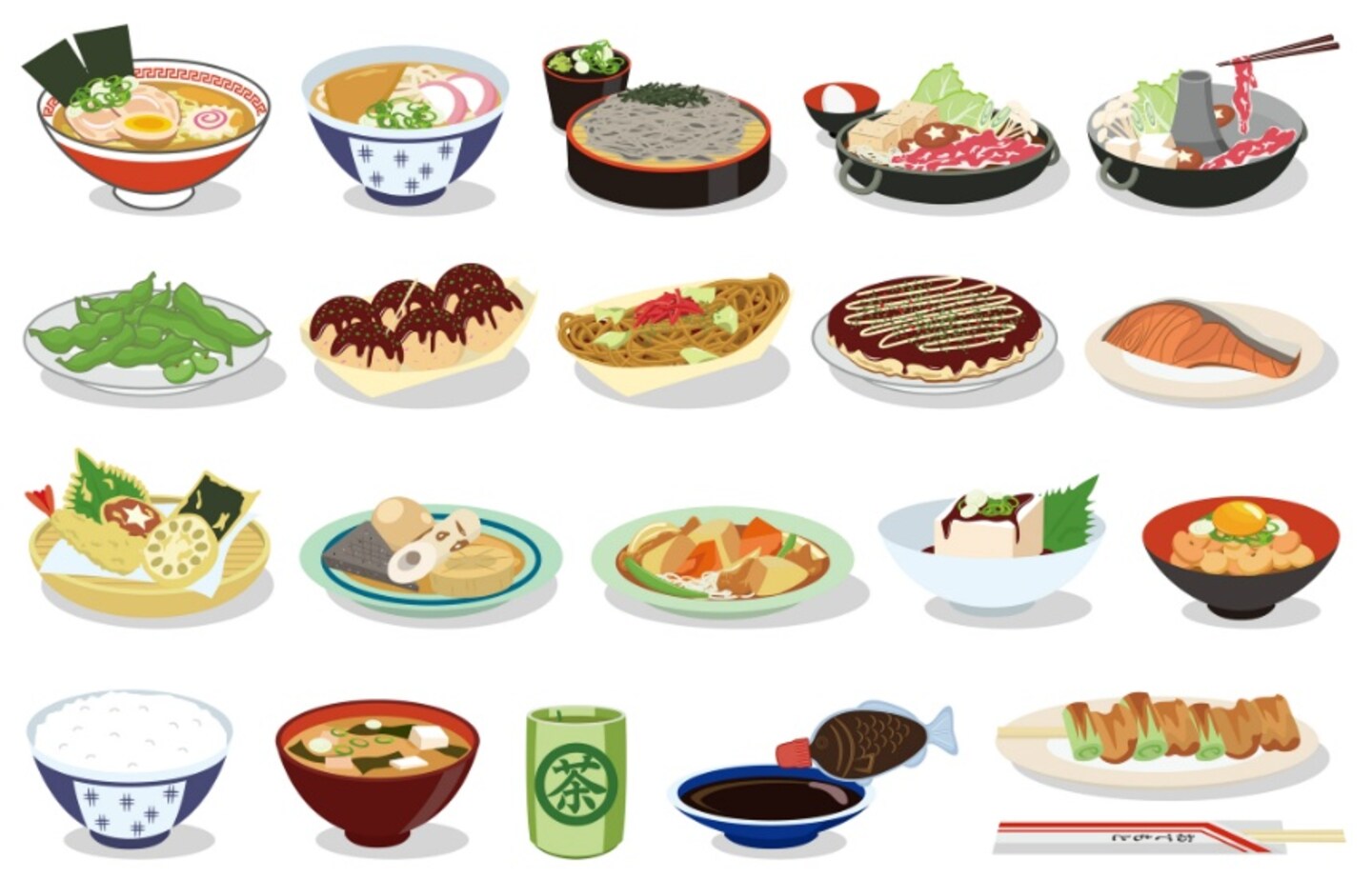Japanese Foods to Know Before You Go
While dishes like sushi and ramen have become ambassadors of Japanese cuisine abroad, the local food scene is more crowded and delicious than you might think. With a little familiarity, you'll be able to easily recognize the dishes below. Be sure to try as many as you can while dining out in Japan!
By Diletta FabianiOden
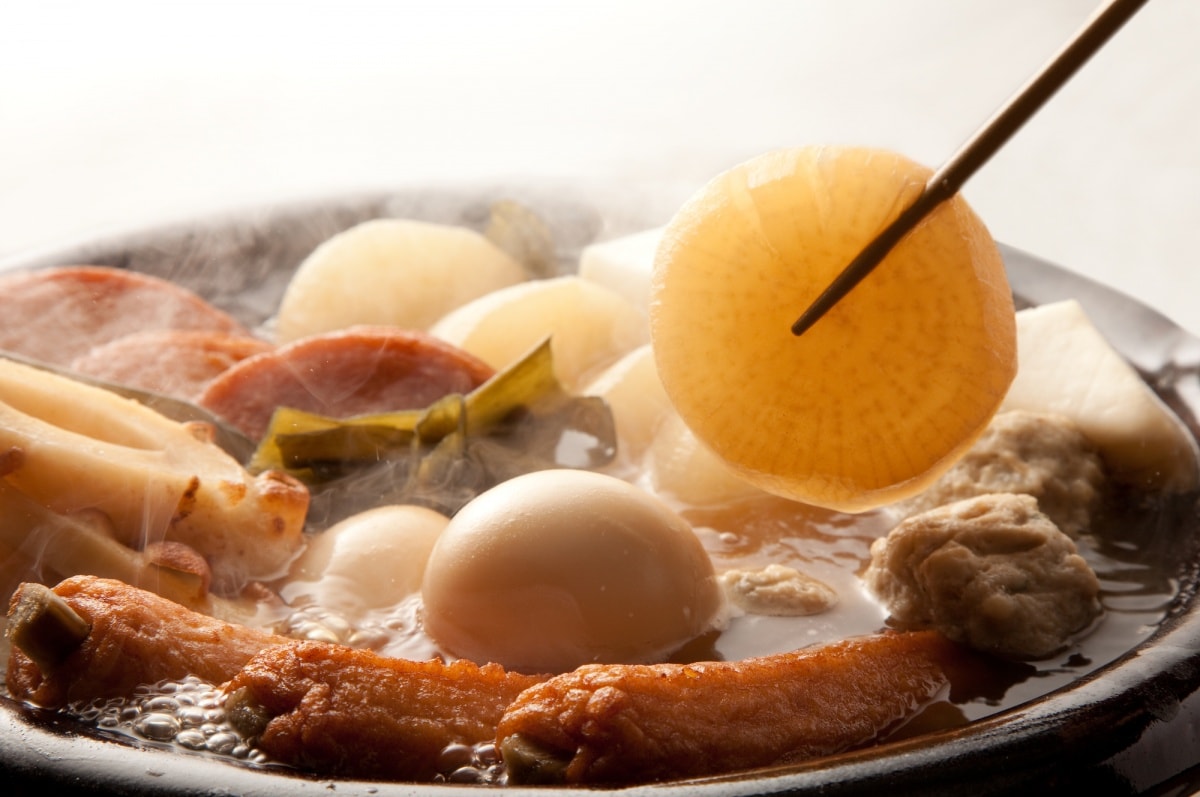
https://pixta.jp/
Oden is a staple dish in winter, and can be found in izakaya and convenience stores throughout the country. In this comfort dish, several different foodstuffs are simmered in a soy-flavored dashi soup, which means the longer it cooks the more flavorful it becomes! Convenience stores sell individual foodstuffs a la carte, while supermarkets sell both sets or the individual ingredients to make the perfect oden at home.
There are many different types of dashi, but the most common are those made from konbu (kelp) or katsuobushi bonito flakes. However, oden can also be a homemade favorite for vegetarians, since the soup it is simmered in can be made without fish stock.
One of the great things about oden is that the ingredients vary depending on region and household—talk about variety! Some common ingredients include:
• Boiled eggs
• Sliced daikon radish
• Konnyaku (a gelatinous yam cake)
• Types of tofu—atsu-age (deep fried), kinchaku (a pouch of thin, fried tofu filled with mochi or other ingredients) or ganmodoki (a fried tofu and veggie fritter)
• Fish-based products—chikuwa (tube-like fish cakes), satsuma-age (fried fish and veggie cakes) or hanpen (triangular fish cakes)
Plus if you want to kick it up a notch, you can add a little karashi mustard! Don't forget to try it next winter!
Sukiyaki
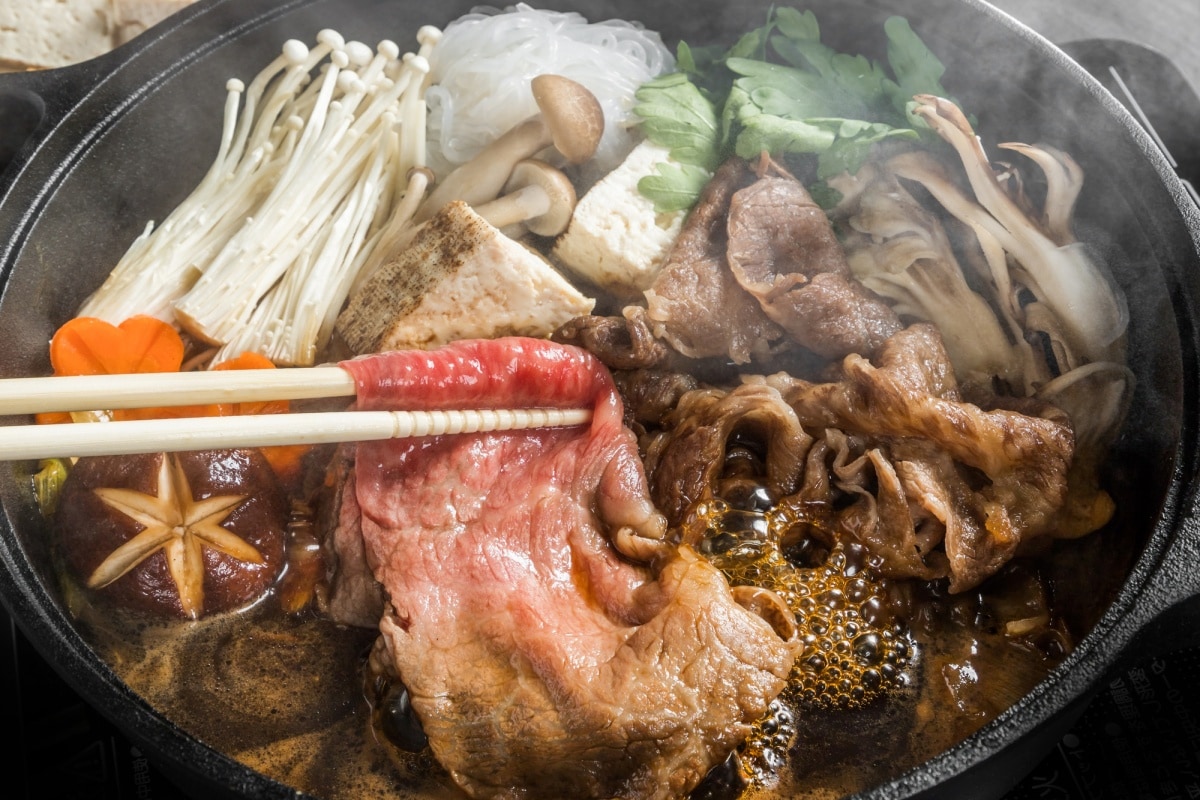
https://pixta.jp
Sukiyaki is a Japanese hot pot that consists of thin slices of meat (usually beef) slowly cooked together with vegetables and tofu in a pot. The vegetables can vary according to one's taste or the region, but commonly used vegetables are scallion, Japanese mushrooms like shiitake, konnyaku or shirataki noodles, and leafy vegetables like Chinese cabbage.
The base soup is usually made with soy sauce, sugar and mirin (a type of rice wine), and has a slightly sweet, savory taste. After being cooked, the ingredients are typically dipped in beaten raw egg and eaten.
This dish is also subject to regional and family variations—in Osaka-style sukiyaki, the meat is cooked first, and all the other ingredients—including the soup—are added after.
Shabu-Shabu
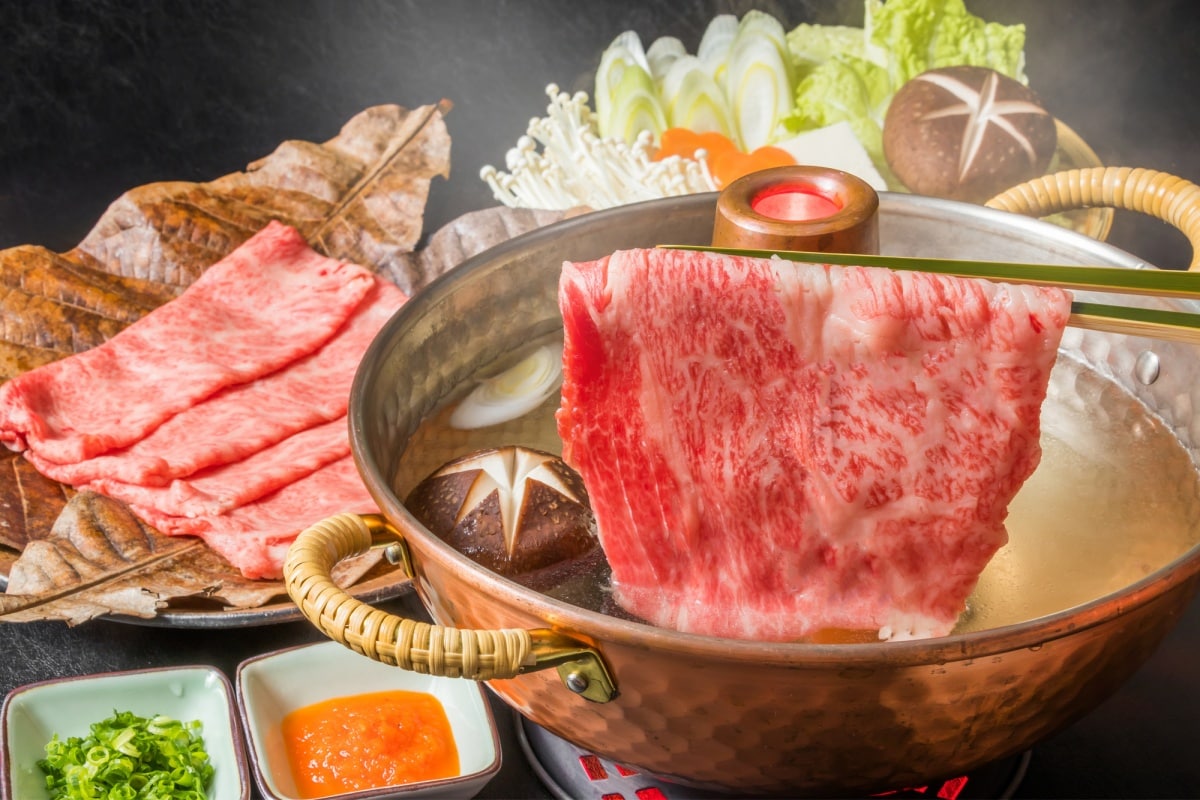
https://pixta.jp
Shabu-shabu is a similar hot pot dish, but is distinguishable from sukiyaki in two key ways—the base of the soup and the way it's cooked. The base of shabu-shabu is typically a clear konbu broth, and the ingredients are dipped in ponzu (a citrus-based soy) or goma (sesame seeds) before they're eaten.
The ingredients can be quite similar, although shabu-shabu can include various types of meats and seafoods, like chicken, pork, crab or lobster.
Chankonabe
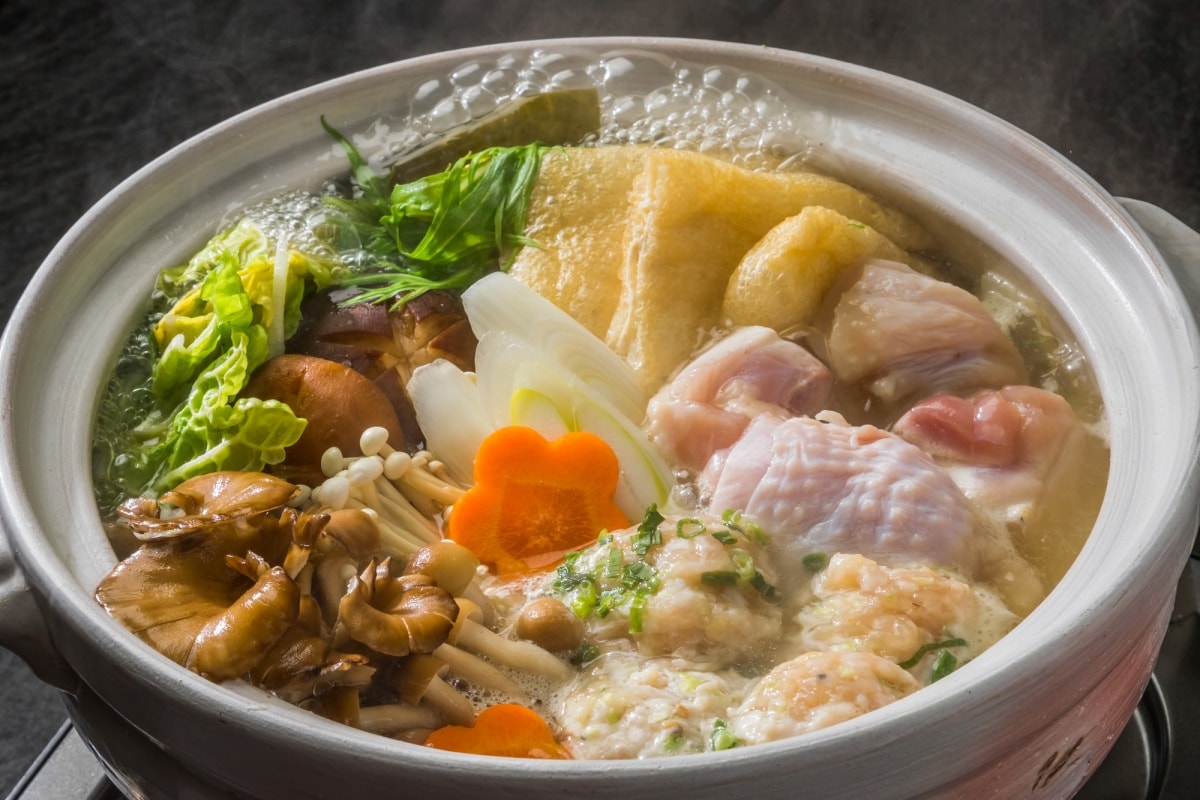
https://commons.wikimedia.org/wiki/File:Chankonabe-japanesefood2007.jpg
This hearty hot pot is a well-known favorite of sumo wrestlers! As you'd imagine, chankonabe is rich in both protein and calories, and different sumo stables have their own personal recipes. Some common ingredients are meatballs, fish balls, chicken, tofu, udon buckwheat noodles, as well as vegetables such as daikon radish, mushrooms or Chinese cabbage The ingredients are all simmered in a dashi or chicken broth that is flavored with mirin or sake.
Donburi
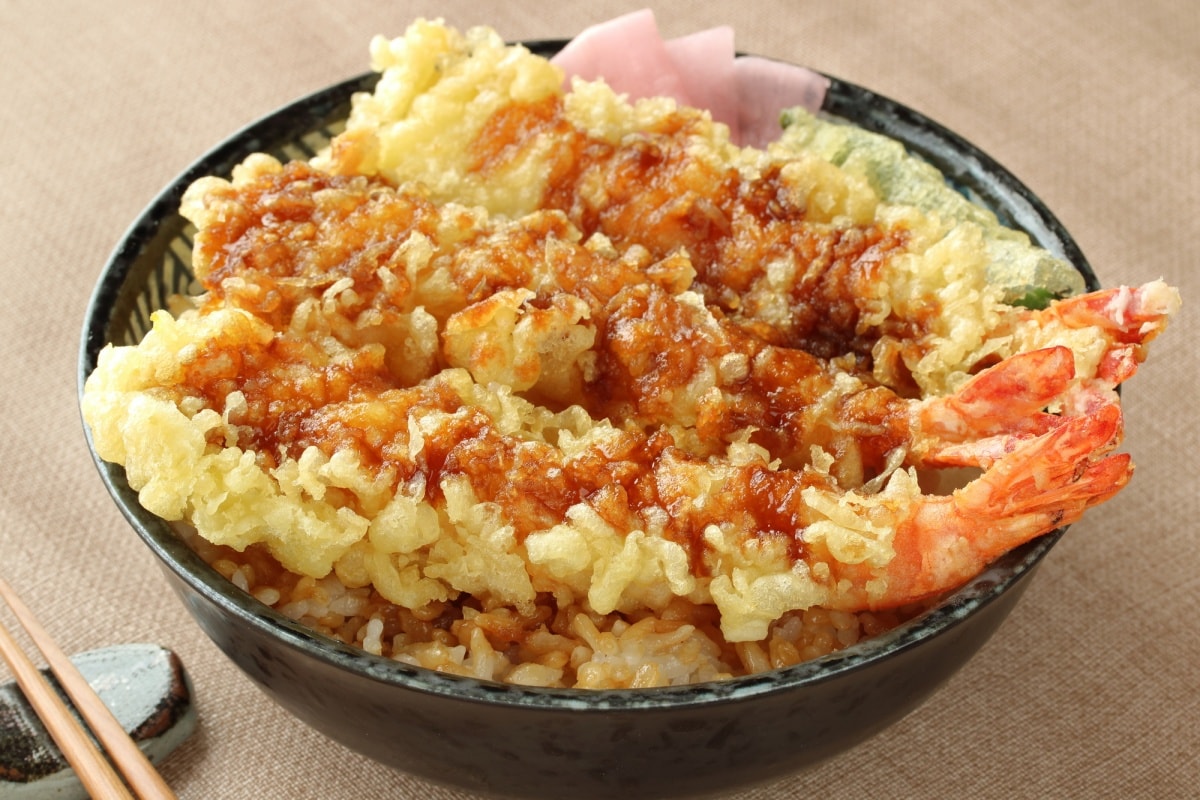
https://commons.wikimedia.org/wiki/File:Katsudon_and_miso_soup_by_jetalone.jpg
Rice is a staple Japanese food, so it's not surprising that an entire group of rice bowl dishes exists. Donburi typically consist of fish, meat or vegetables with other ingredients that are simmered together and served over rice. Dishes in this category typically have the suffix don added to them. Some examples include:
• Katsudon—a bowl of rice topped with a fried cutlet, egg and vegetables. The name is a combination of katsu, a breaded and fried cutlet, and donburi.
• Oyakodon—this delicious dish's name is a bit macabre, since it literally means "parent and child rice bowl." This is in reference to the ingredients, as chicken, egg and sliced scallion are simmered in a soy sauce and then served on top of the rice.
• Negitorodon—rice is topped by diced fatty tuna, toro, and negi sliced scallions
• Unadon—the una stands for unagi (eel), which tops this particular rice bowl. The eel is grilled in a sweet soy sauce until it caramelizes.
• Gyudon —rice is topped with slices of beef and onion, which have been simmered in a slightly sweet sauce made of dashi, soy sauce and mirin.
• Tendon—a selection of tempura, veggies or otherwise, is served over rice.
And the list goes on and on! There are tons of regional specialties throughout the country as well.
Onigiri
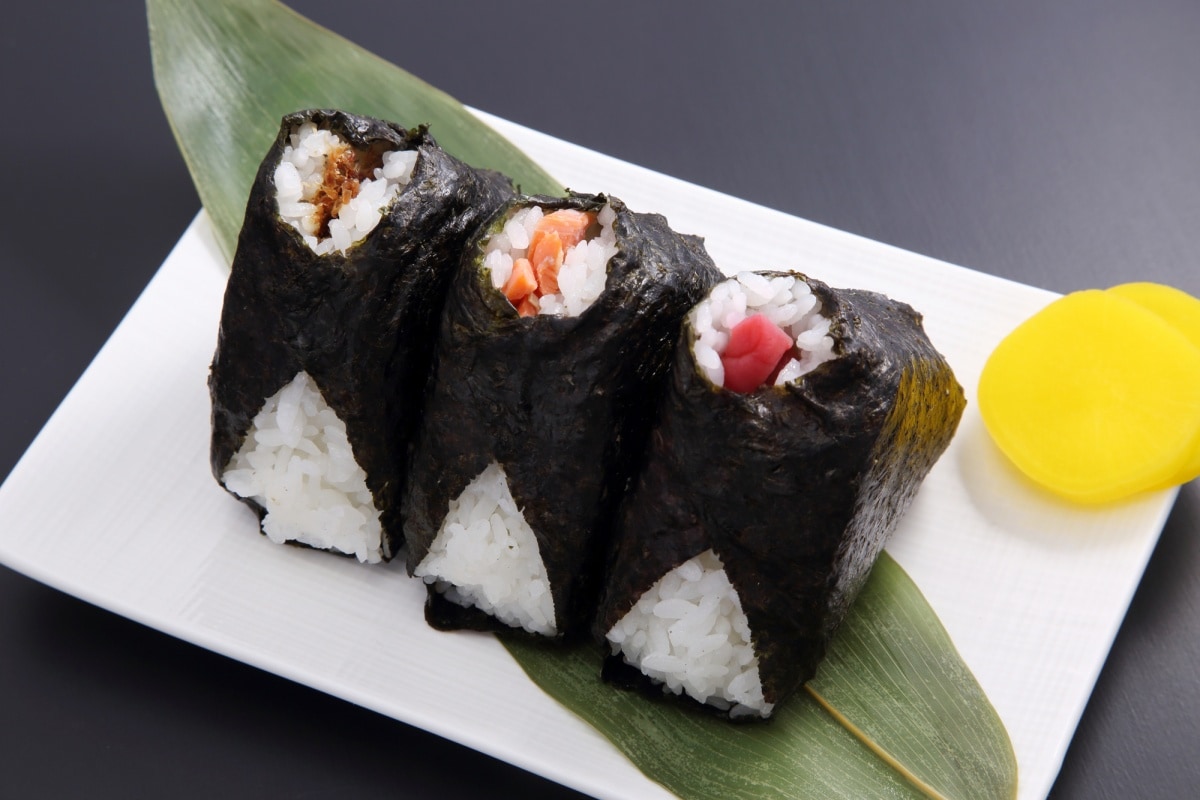
https://pixta.jp
Onigiri are great for a quick lunch or snack, as they’re both portable and filling. Rice is shaped into a triangle or cylinder, often wrapped in nori seaweed and filled with other ingredients. Onigiri can be easily found in convenience stores, supermarkets and specialty shops, and are super easy to make at home! The variations are too many too count, but the filling usually consists of fish or vegetables.
Some of the most common onigiri are tuna and mayonnaise, ebi shrimp and mayonnaise, salmon, negitoro, okaka (bonito flavored with soy sauce), mentaiko (marinated, slightly spicy pollock roe), tarako (salted cod roe) and ikura (salted salmon roe). There are also many onigiri that are perfect for vegetarians, like ume (plum), konbu, nori and sesame, takana (leaf mustard) and nozawana (a veggie similar to mustard leaf that is often pickled). Stock up on your favorite type before a long trip or a day spent outdoors!
Tsukemen
Unlike its well-known cousin ramen, the noodles and soup are served separately in tsukemen. Like the hot pot dishes on this list, the soup is served hot and the noodles are dipped in and then eaten. This dish was invented in 1961 by Kazuo Yamagishi, the owner of a ramen restaurant in Tokyo, and can now be found throughout the country. Soba and udon are often used as noodles, and the soup is much more concentrated than the standard ramen broth, making its flavor more intense.
Somen

https://pixta.jp
Somen is the perfect version of noodles for the hottest summer days. Somen noodles are made of wheat flour and they are very thin and white. Usually they're dipped in a sauce called tsuyu, which is made with bonito flakes and vegetables such as ginger or scallion. While they can be served hot in soup, they're mostly eaten cold in summer. It's a refreshing way to cut through the intense summer heat.
Soba
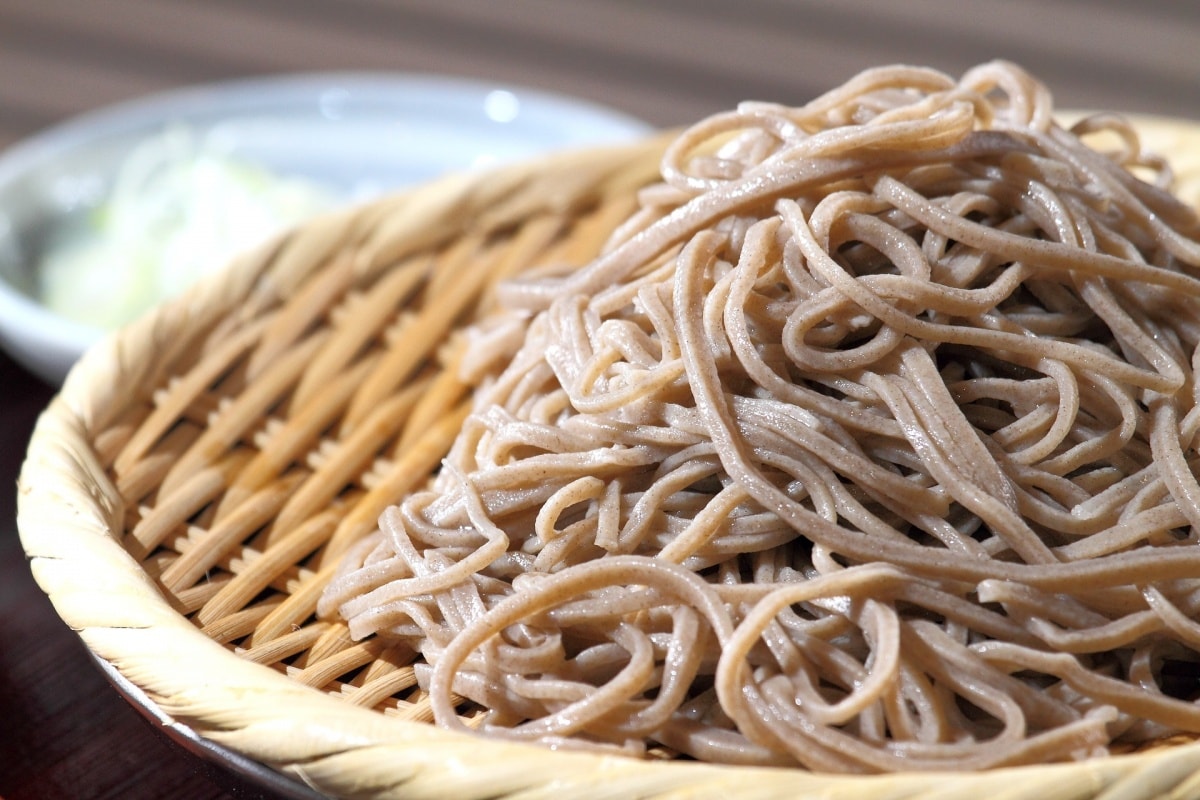
https://pixabay.com/it/tagliatelle-di-soba-vicino-a-801660/
Soba are thin noodles made from buckwheat flour, and they can be served hot or cold. There are several types of soba, but if the buckwheat taste is too much for you, you might enjoy hachiwari soba, which is made of 80% buckwheat flour and 20% wheat flour.
Udon
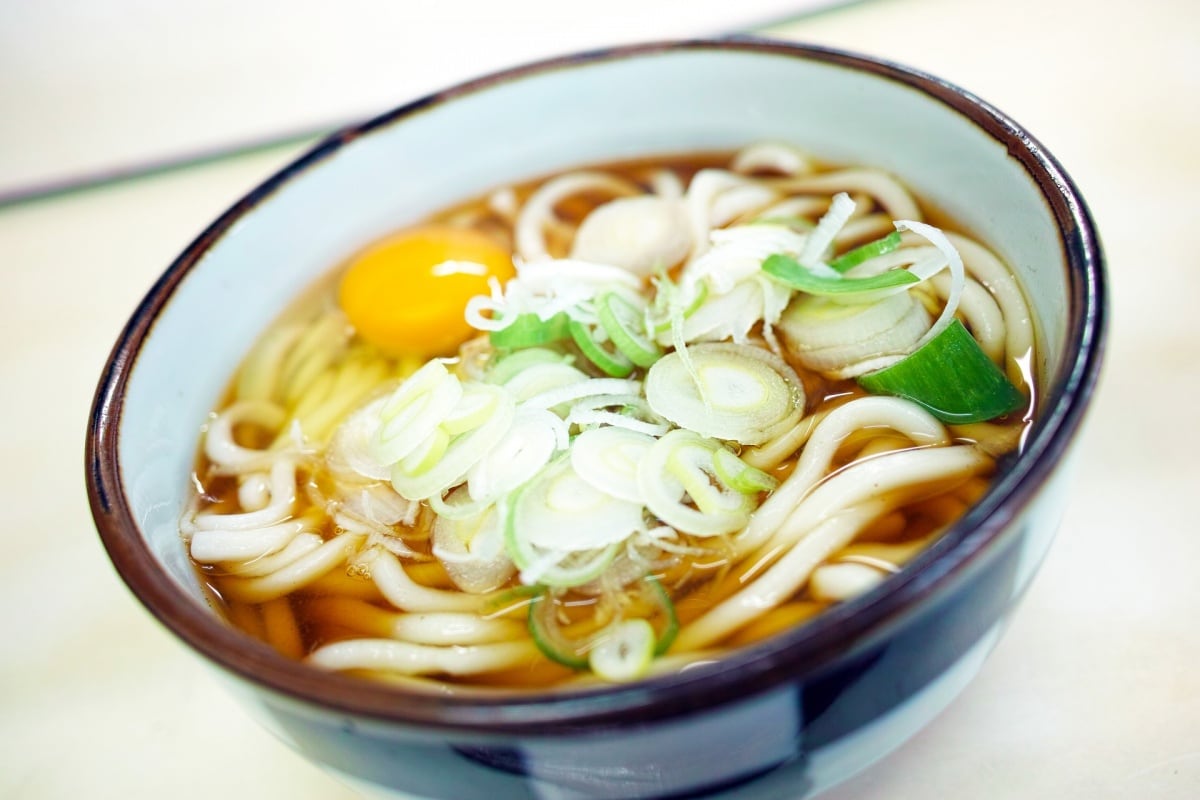
https://pixabay.com/it/cibo-giapponese-cibo-giappone-2199963/
On the other hand, udon are thick wheat flour noodles. They are white and have a much milder taste.
Soba and udon can be used interchangeably in many hot recipes. Some examples include kitsune soba or udon (noodles in broth with abura-age tofu slices), kake soba or udon (noodles in a clear broth, topped with thinly sliced scallion), tsukimi soba or udon (noodles in broth with raw egg and vegetables), wakame soba or udon (noodles in broth topped with seaweed) and many, many more.
When it comes to cold dishes, soba can be used cold in hiyashi (literally "chilled") soba, topped with various ingredients like tororo (Japanese yam puree), natto (fermented, sticky soybeans) or okra. Cold broth is then poured on the soba and toppings. In a similar fashion, in zaru soba the noodles are topped with shredded dried seaweed and dipped in cold mentsuyu, a dipping sauce usually made of soup stock, mirin and water. The name of the dish comes from the bamboo basket in which the noodles are traditionally served.
Tempura
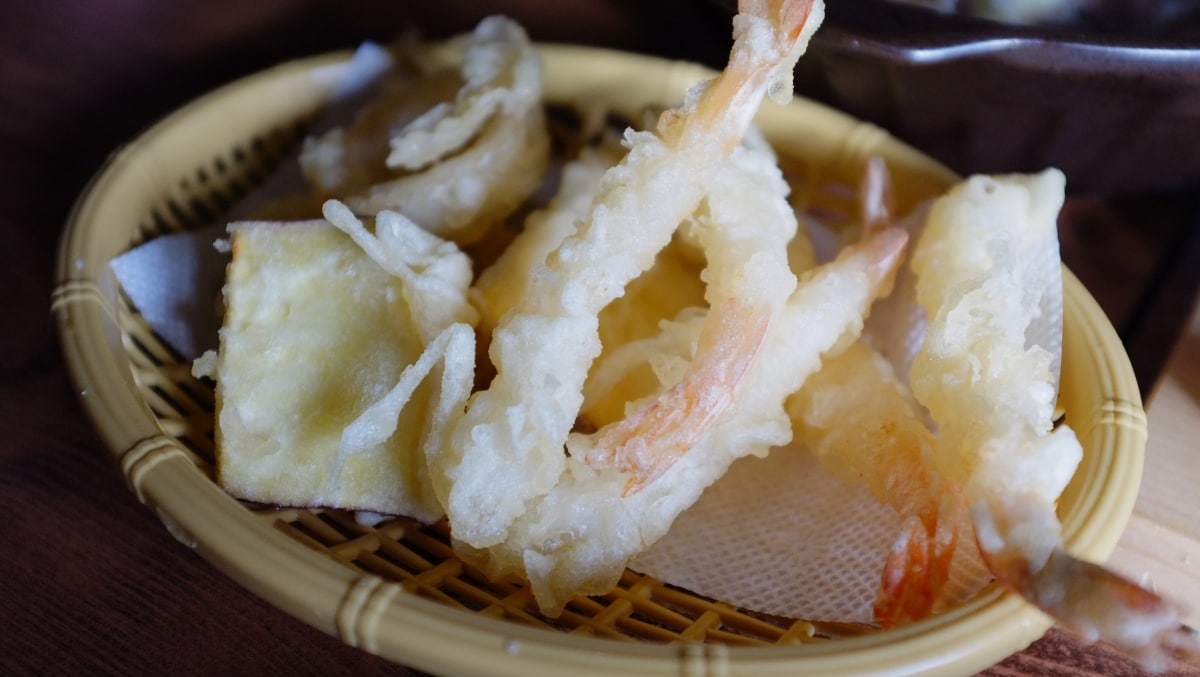
https://pixabay.com/en/fry-cooking-shrimp-tempura-737382/
Soba and udon are also often coupled with tempura, another typical Japanese dish. Tempura is lightly battered seafood or vegetables that are then deep-fried and served with a special sauce. Popular selections include shrimp, white fish, eggplant, kabocha squash, Japanese sweet potato and more!
Yakisoba
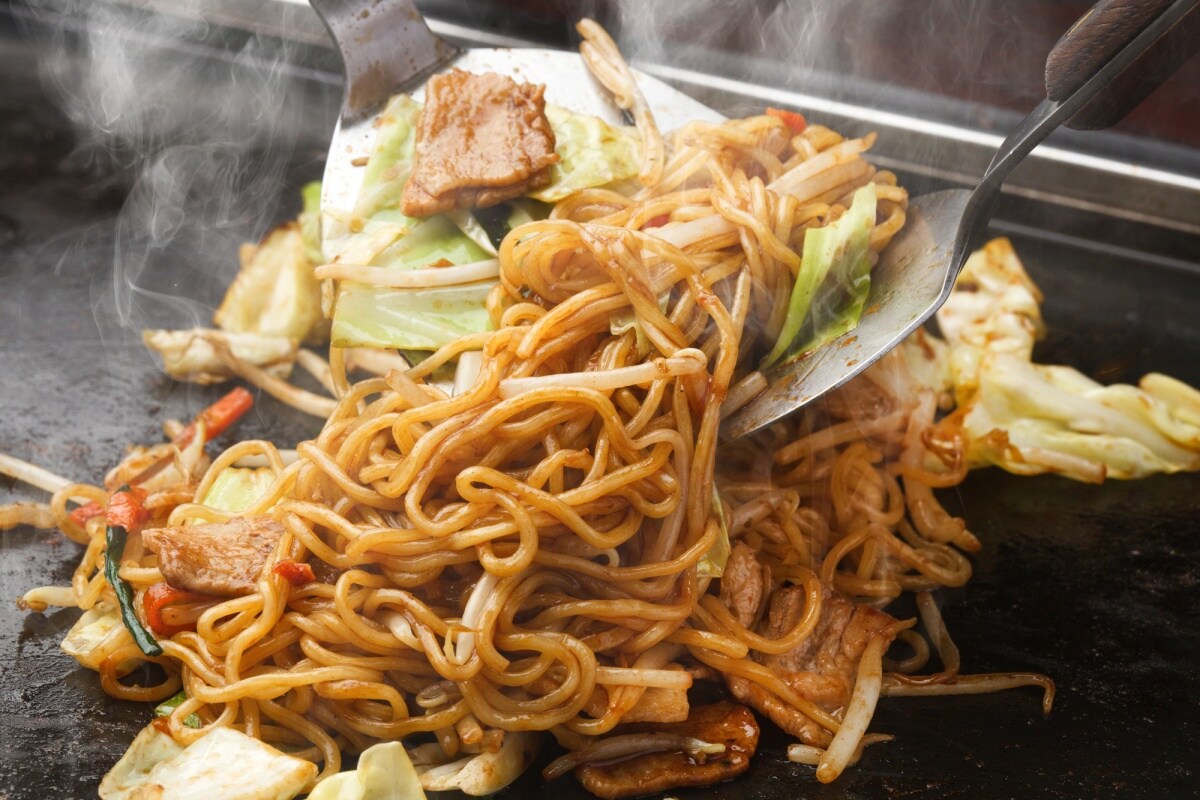
https://pixta.jp
Although soba was already on the list, yakisoba belongs here because the noodles are actually wheat flour noodles, not buckwheat. The yaki in yakisoba means "grilled." In this dish, the noodles are cooked on a griddle or frypan with vegetables—usually cabbage, onion and carrot—and sliced pork, and flavored with a sweet and savory yakisoba sauce. Such sauce can be commonly bought in Japan, but it can also be made from scratch with Worcestershire sauce, soy sauce, oyster sauce, tomato paste and sugar.
Yakisoba can also be garnished with a variety of toppings, such as aonori seaweed powder, beni shoga shredded and pickled ginger, bonito flakes and mayonnaise. Yakisoba is representative of summer, and is typically served at food stands that accompany summer festivals.
Takoyaki
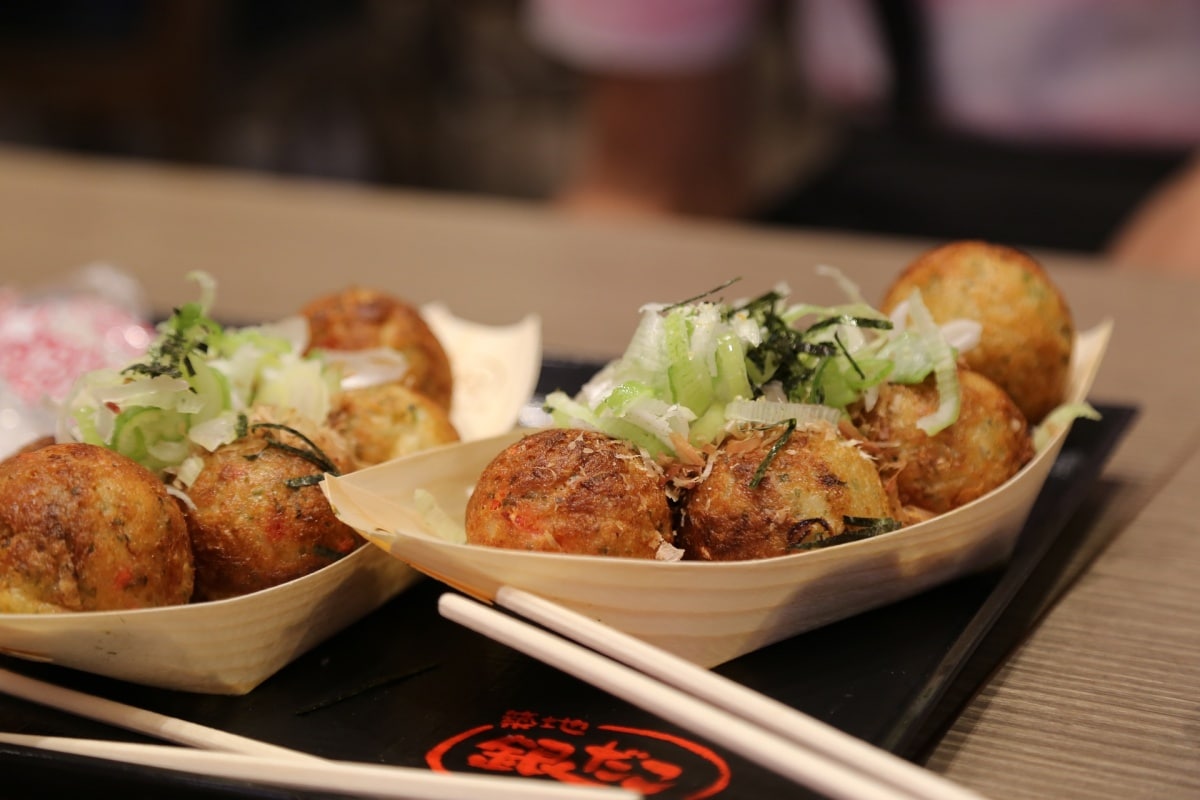
https://pixabay.com/it/cibo-takoyaki-palla-1614130/
Takoyaki is also part of the “grilled” family. It's a batter made from wheat flour, mixed with tako, or octopus, and shaped in a ball thanks to a special molding pan. The balls often include other ingredients besides tako, such as ginger and green onion, and are topped with takoyaki sauce (similar in taste and consistency to Worcestershire sauce), mayonnaise, aonori seaweed and bonito flakes. However, there are many variations to the filling and sauce.
Takoyaki is often sold from food carts or stalls at festivals, or in izakaya and karaoke facilities.
Okonomiyaki

https://pixta.jp
The name okonomiyaki couples the concept of okonomi, or "whatever you'd like," with grilling. As the name suggests, this dish can be prepared with a variety of ingredients.
There are two famous styles of okonomiyaki, associated with Osaka and Hiroshima, respectively. In both cases, the base of the dish is a batter of flour, grated Japanese yam, water or dashi, eggs and shredded cabbage. This batter is accompanied with a variety of ingredients, from seafood like shrimp and squid to meat like pork, and also cheese or vegetables. In the Osaka style, these ingredients are mixed with the batter and then cooked, while in the Hiroshima version they are layered and then cooked cooked. Fried noodles are sometimes added to both versions, making this an especially decadent dish.
One fun aspect of okonomiyaki is that restaurants tend to have countertops or tables equipped with large griddles, where customers can watch the chefs cook their food in front of them.
Yakitori

https://pixta.jp
Yakitori is another popular izakaya or festival stall or cart food. It consists of skewered chicken grilled over a charcoal fire, and is typically seasoned with a tare sauce or simple spices such as salt or pepper. Common skewers include chicken breast, thigh meat and scallions, chicken meatballs, crispy chicken skin and organs such as hearts and liver.
Kushi-katsu
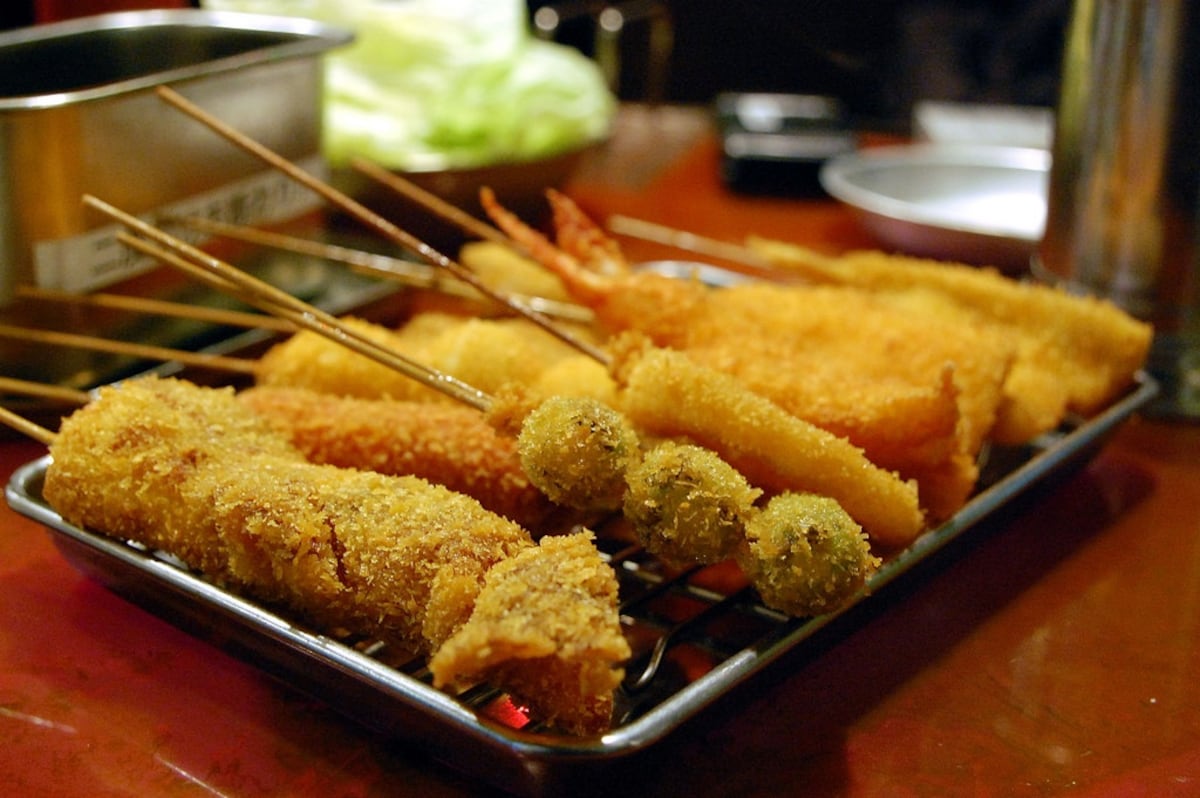
https://www.flickr.com/photos/kimishowota/3251940623
Another food Osaka is famous for, kushi-katsu is skewered meats and vegetables that are deep fried and typically served with tonkatsu sauce. Unlike yakitori, kushikatsu can be made with various types of meat, seafood and vegetables. The ingredients are then dipped in egg, flour and bread crumbs, and deep-fried.
Be careful if you eat this dish at a restaurant—before eating, it’s common to pour thinner sauce on the kushi-katsu. But since the sauce pot is shared among customers, dipping is a big faux pas. Some restaurants provide a brush or spoon for this purpose, but if you're feeling creative you could always use an order of cabbage to help scoop it up!
Sansai
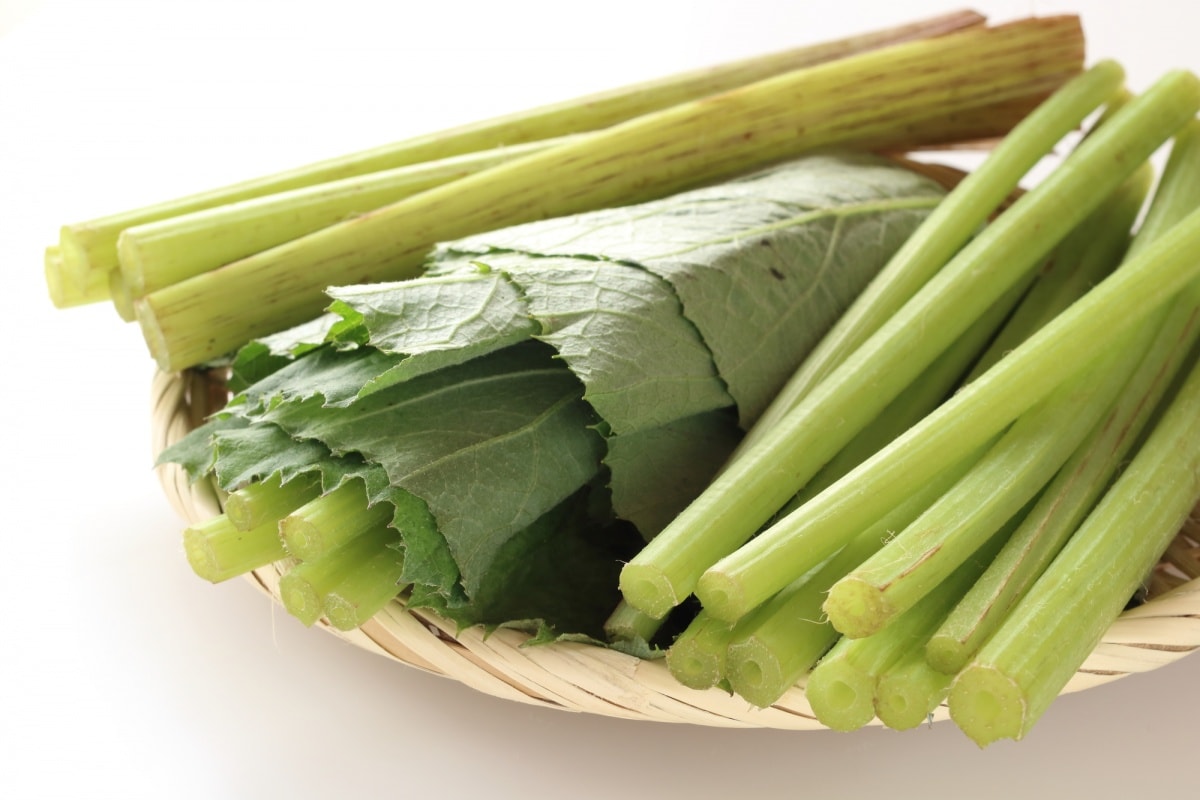
https://pixta.jp
The term sansai literally means “mountain vegetables," and it’s used to indicate several edible vegetables than can be naturally found in the wild—even though many are now intentionally cultivated. These plants are commonly used in Buddhist cuisine, shojin ryori, and are a great choice for vegetarians or vegans.
There are many plants included under the broad sansai umbrella, and they are often sold in supermarkets pre-cooked and packaged in liquid. Their taste tends to be aromatic and slightly bitter, and they're enjoyed in many different ways. They can be prepared with other vegetables, grilled, battered and fried, added to rice-based dishes like donburi and sometimes even eaten as salads.
Some sansai you can commonly find on store shelves are taranome (Japanese angelica tree shoots), takenoko (bamboo shoots) and mitsuba (Japanese wild parsley).
Omurice
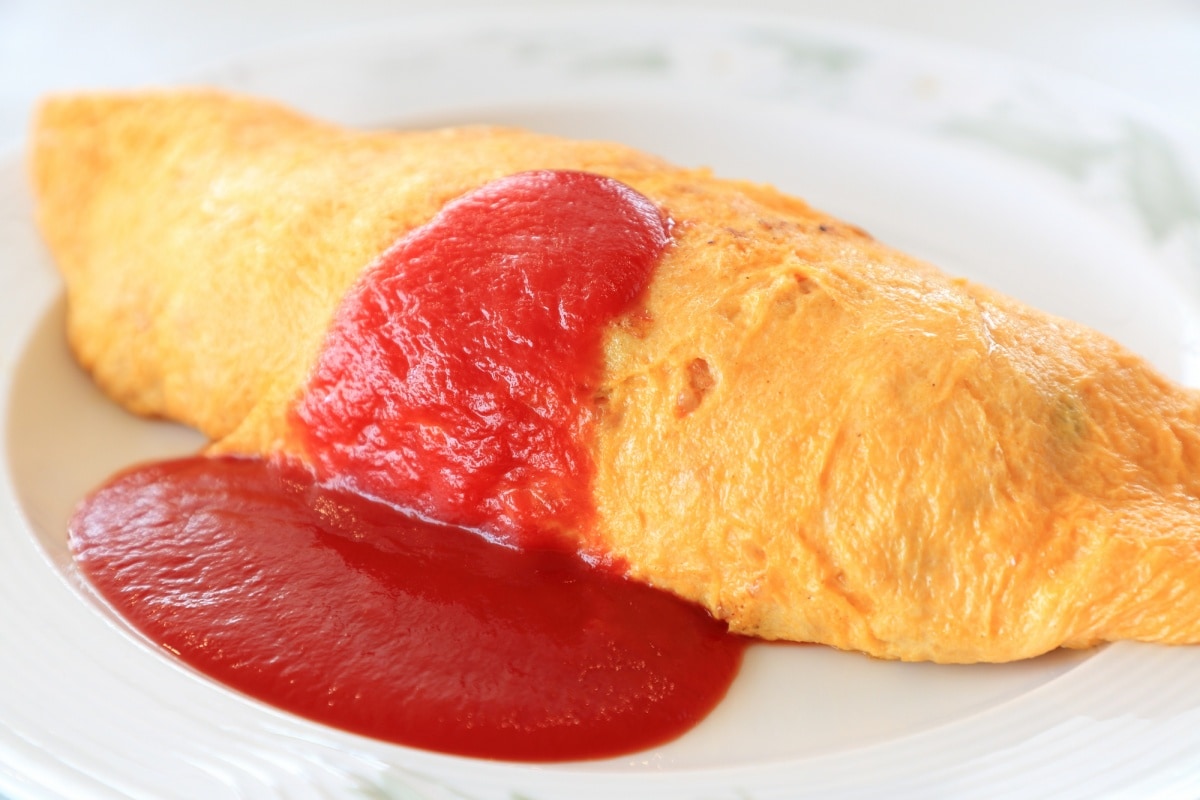
https://pixta.jp
The origin of omurice is hard to nail down, but it may have originated at the Rengatei restaurant in Tokyo's Ginza neighborhood. As the name would suggest, it consists of an omelette filled with fried rice and topped with ketchup. However, the rice can also be mixed with other ingredients such as meat and vegetables and the sauce that tops it can change, since restaurants that specialize in omurice usually have several signature variations.
Curry Rice
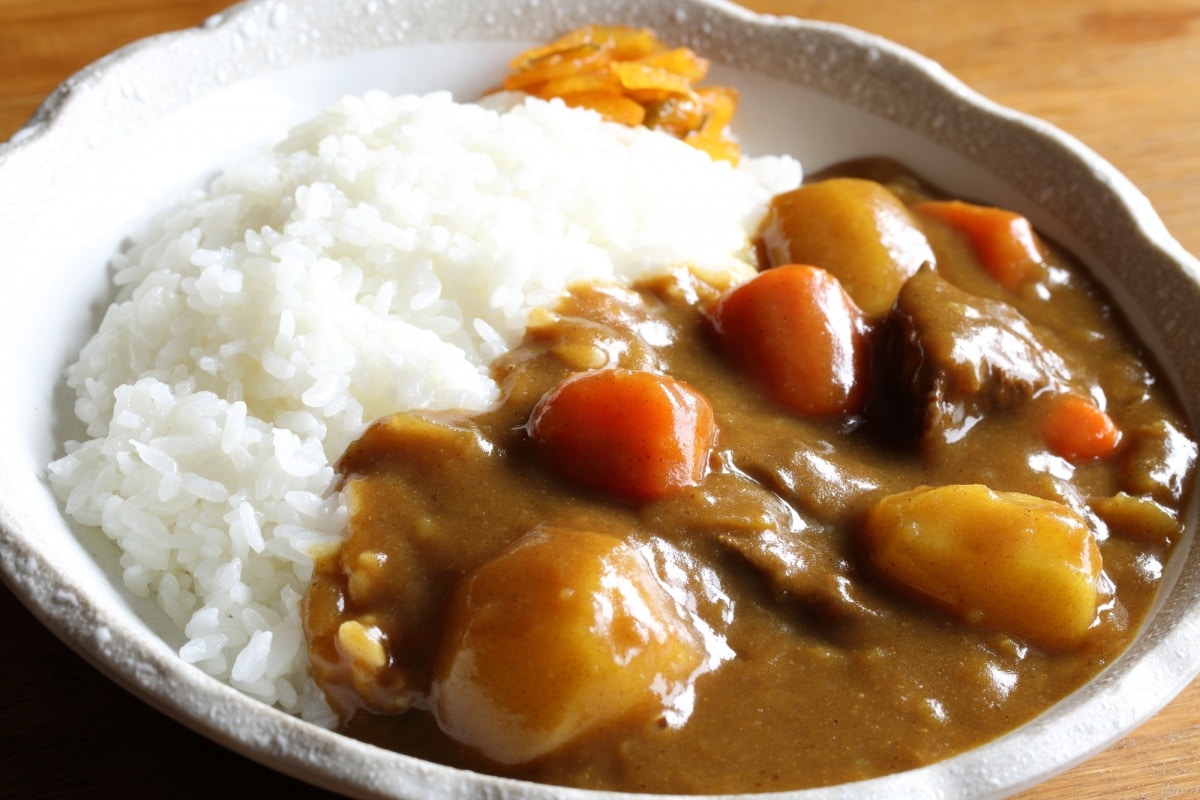
https://pixta.jp
Like many other countries Japan has its own curry tradition, with many chain restaurants that specialize in this simple, hearty dish. It's thought that curry was introduced to Japan by the British during the Meiji Period. It has a mild flavor and can be quite thick, like a stew. Nowadays, it’s prepared with many different types of vegetables and meat, and is commonly served alongside rice. When making it at home, it can be easily bought in pouches or made from curry roux sold in boxed blocks. If you like a little kick, be sure to try a spicier version!


